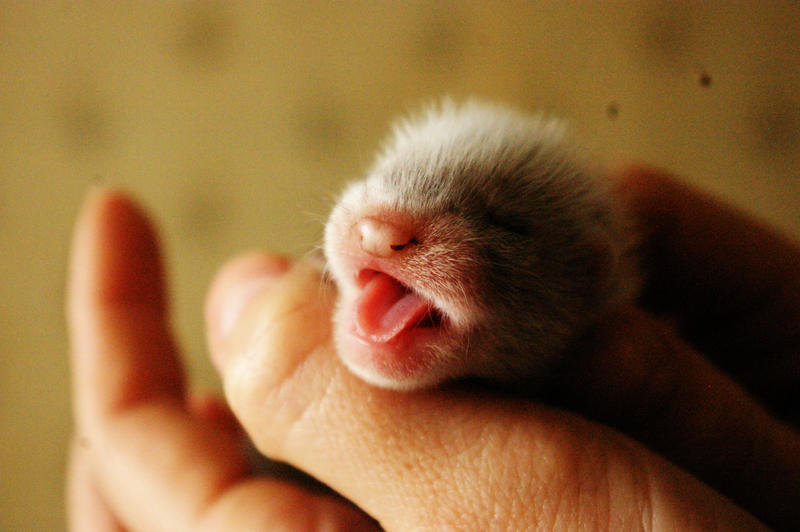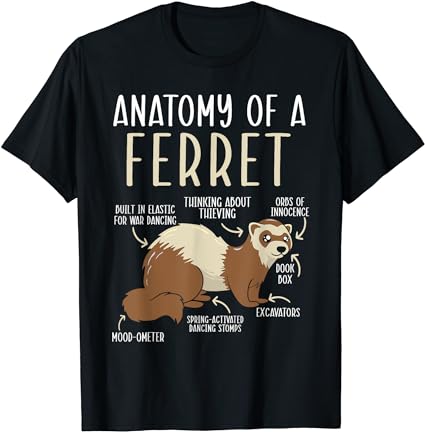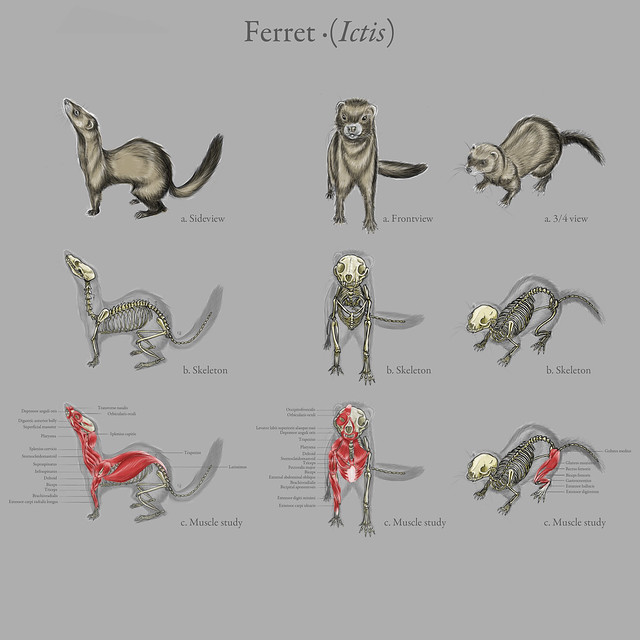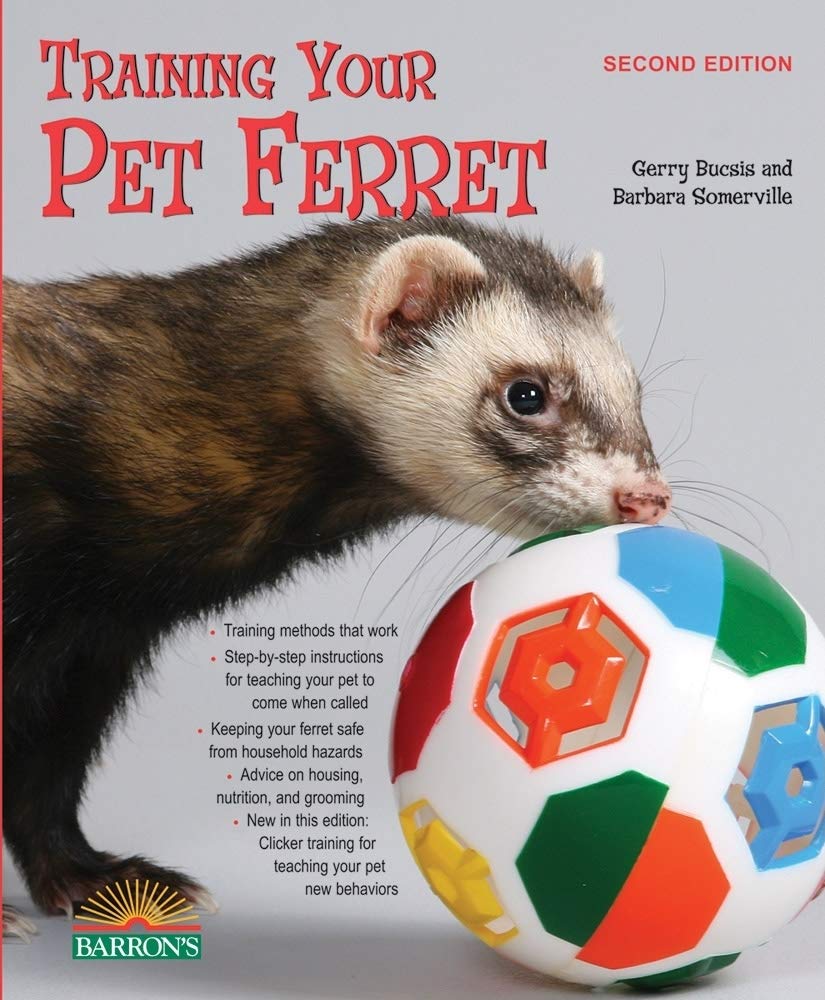Anatomy of a Ferret
Ferret Anatomy
Ferrets are unique animals that are kept as pets in most parts of the world. As a ferret owner, knowing the anatomy of a ferret’s physical features will help you better understand the needs and upkeep of your pet.
As ferrets are predators by nature, their anatomy is generally similar to those of most carnivores. Ferrets have sharp teeth and claws that allow them to hunt a variety of prey and their bodies are long and slim, allowing them to enter narrow places in search of their prey.
If you’re interested in learning about the peculiar characteristics of ferrets’ bodies and the overall anatomy of a ferret, this article is for you. Our small animal veterinarian has put together all the anatomical aspects of ferrets, so keep reading.
Ferret Teeth
Teething begins in young ferrets at the age of 4 weeks, during the first stage eruption of milk teeth (deciduous teeth) occurs and the second stage sees the eruption of permanent teeth.
Ferrets have brachydont teeth, which means that the roots of their teeth are well-developed and have a short crown with a limited pulp canal to give them extra strength.
Most veterinary clinics now see ferret patients, thus professional knowledge regarding ferrets needs to be expanded. Ferret patients must also undergo thorough dental examinations at least once a year because ferrets can suffer from oral pain and dental issues.
Milk Teeth
Ferrets possess 28 to 30 milk teeth (deciduous teeth). At 3 to 4 weeks of age, deciduous teeth start to emerge while permanent teeth begin to erupt as early as 8 weeks of age in ferrets.
Permanent Teeth
Ferrets have 34 permanent teeth. These permanent teeth show up between the age of 6 to 8 weeks and by this time young ferrets will be weaned by their mother and will consume solid food.
Teeth Growth In Ferrets
Ferrets lack a set of constantly growing teeth and have the heterodont (of different shapes) set of teeth similar to cats and dogs. Ferrets can bite you hard if provoked thanks to their sharp teeth.
However, ferrets as pets must maintain good hygiene and dental health to stay in good shape. Their teeth are strong enough to easily cut through flesh and sometimes bite through bones.

Ferret Skeleton
The skeletal system of a ferret consists of 200 bones that are most comparable to those of other mammals, including humans. Though there are certain distinctive variations that are unique to ferrets. Three sections make up a the anatomy of a ferret’s skeleton:
Axial Skeleton
This portion is made up of the skull, ribs, vertebrae, and sternum.
Appendicular Skeleton
Made up of the pelvis, shoulder, bones of the front limbs, and rear limbs.
Heterotopic Skeleton
This section is made up of kneecaps and fabella in a tendon of the rear limbs.
Uniqueness Of A Ferret Skeleton
Individual skull bones are firm in adults and there are no fusion lines connecting the bones. The ferret’s skull is twice as long as it is wide. As opposed to other mammals, the skull’s top is flat rather than round.
Ferrets have small mouths and their jaw bones are hard to disconnect. In comparison to the ferret’s brain case, the ferret’s skull is small. The ferret’s neck is fairly lengthy and they have a distinct vertebral column. Their neck is generally stronger relative to their bodies.
The lower spine has six vertebrae, but some ferrets have five or seven. The bones in the front limbs of ferrets are light, short, and have a small diameter. The bones of the rear limbs are relatively light as well, however, they are longer than the bones of the front limbs.
Do Ferrets Have Spines?
Do ferrets have spines? Of course ferrets have spines because they are mammals, and all mammals are vertebrates. As you may have noticed however, ferrets have flexible spines which allows them to run through underground tunnels with ease. A ferret’s long, flexible spine can bend unconventionally because of its 15 thoracic, 5 lumbar, and 3 sacral vertebrae.
The anatomy of a ferret is such that the ferret’s spine is relatively large compared to most other mammals. However the bones are very small and great in number. This anomaly also help a ferret’s spine bend and twist like few other vertebrates on the planet. Although bending their body makes them appear awkward to the human eye, it is completely normal for ferrets.
Ferret Reproductive System

The age at which ferrets become sexually mature ranges from 6 to 8 months. Most ferrets are sterilized before they are 6 weeks old.
Females go into heat as they attain sexual maturity and will stay in heat until they are bred. Male ferrets produce a strong odoriferous odor as they enter the breeding season if they have not been neutered. Male ferrets mark their territory with urination.
Do Ferrets Have Anal Glands?
Anal glands are fully developed in ferrets. Similar to skunks, these glands create a pervasive watery fluid that is yellow and they release it when they are scared or irritated. However unlike skunks, they are unable to throw the fluid over a long distance and the scent only lingers for a short while.
Other glands
Ferrets have active sebaceous glands in their skin, which give them their distinctive musky smell. Because they lack sweat glands, they cannot be permitted to become overheated on hot days.
Ferret senses
Since ferrets have poor eyesight, they usually rely on their sense of taste, hearing, and smell. Ferrets express their emotions through their body language and vocalization.
Vision
Ferrets have binocular vision. Their eyes can pivot so that they can focus on various things. The majority of ferrets have forward-facing eyes and swivel their heads sideways to view objects. Beyond a few feet, ferrets cannot see clearly.
Hearing
Ferrets have a keen sense of hearing. Ferrets can even hear sounds that are extremely faint and of low frequency. Ferrets are also sensitive to conventional sounds like human conversation, music, etc.
Smell sensation
Ferrets have a sharp sense of smell, which aids in survival in the wild and hunting. Since they are noisome animals, having a keen sense of smell also helps them in recognizing other ferrets and identifying various foods in captivity.
Ferret Body Weight And Size
A ferret’s length is typically around 50 cm. They weigh between 0.7 and 2.0 kilograms. An average adult female ferret weighs close to 1 pound 6 ounces, whereas an adult male weighs 2 to 4 pounds.
Ferrets come in a variety of shapes, colors, patterns, and lengths. The anatomy of a ferret’s head is similar to the shape of zucchini. Ferrets have tails that are 7 to 9 cm long, or half the length of their bodies to help them in balancing.
Final Words on the Anatomy of a Ferret
Ferrets are becoming more popular as pets because they are active and social animals, similar to cats and dogs. Knowing the anatomy and physical features of a ferret will allow you to properly care for your pet ferret and discover any anomalies in its body. If you discover any abnormality in your pet immediately contact a veterinarian.
Click the button below to find a ferret vet near you. Just type in your zip code to reveal a map of the nearest ferret veterinarians.









Pingback: Super Fun Games for Ferrets and Ferret Games | DIY Ferret